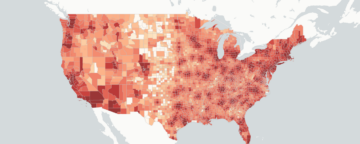APPC Research Associate Jessica Taylor Piotrowski and Research Coordinator Shonna Kydd gave a poster presentation, “Developing Media Interventions to Reduce Household Sugar-sweetened Beverage Consumption,” at the 29th annual scientific meeting of The Obesity Society in October. Authors of the work are Amy B. Jordan, Michael Hennessy, Jessica Taylor Piotrowski, Amy Bleakley, and Shonna Kydd of the Annenberg Public Policy Center and Giridhar Mallya, Sara Solomon, and Rebecca Winkler of the Philadelphia Department of Health.
Presentation abstract:
The World Health Organization recommends that unrefined sugars should comprise no more than 10% of total energy intake (Bere, Glomnes, te Velde, & Klepp, 2007). Epidemiological evidence shows that Americans fail to meet this standard, highlighting sugar-sweetened beverage (SSB) consumption as a key contributor (Guthrie & Morton, 2000). SSB consumption by children and adolescents has increased over the last forty years (French, Lin, & Guthrie, 2003). Because childhood obesity also increased during this period, the association between SSB consumption and obesity has become an important research topic (Rennie, Johnson, & Jebb, 2005). Yet, research on SSB reduction as a public health intervention is limited. To address this problem, the city of Philadelphia created a media campaign to encourage SSB reduction in homes with children. Using the Integrative Model of Behavioral Change and Prediction, a theory-based pre-campaign survey of Philadelphia parents was first conducted to determine the most effective message content. Results indicated that intention to eliminate SSB consumption during meals is attitudinally driven, and suggested that effective messages should highlight how SSB elimination can “make you feel that you are doing something good for your family” and “help prevent weight gain.” Focus group testing led to the selection of three messages – a television ad, transit/ print ad, and a radio spot – that incorporated aspects of the theory-based results from the baseline survey. This campaign was professionally produced and began airing in January of 2011. Message testing found that exposure to campaign messages increased intention to reduce SSBs and supported the underlying beliefs in the correct direction. These results illustrate how the Integrative Model can be applied to the development of a public health intervention directly targeting SSB reduction and indirectly targeting childhood obesity.
View the poster


